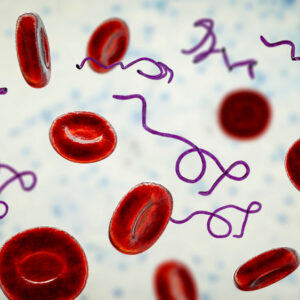ANTI-BORRELIA AFZELII POLYCLONAL ANTIBODY
This is a rabbit polyclonal antibody, that recognizes Borrelia afzelii and is suitable for use in ELISA.
PRODUCT DETAILS – ANTI-BORRELIA AFZELII POLYCLONAL ANTIBODY
- Rabbit anti-Borrelia afzelii antibody
- Immunogen is Borrelia afzelii (strain PKo) antigen (NAT41583)
- Protein A purified
- Presented as liquid in PBS
- Suitable for use in ELISA
BACKGROUND
Lyme disease is a multisystem disorder caused by three species of the tick-borne spirochete Borrelia burgdorferi sensu lato; namely Borrelia burgdorferi sensu stricto (United States and Europe), Borrelia garinii and Borrelia afzelii (Europe). The disease was first recognized in Lyme, Connecticut, United States in 1975, and Borrelia burgdorferi was described as the causative organism in 1982. However, the clinical manifestations of the disorder were previously described by Afzelius in Europe in the early 1900’s (Zouyan & Coburn, 2017).
Borrelia are loosely coiled, spiral, microaerophilic bacteria with 3 to 10 loose coils arranged in a helical shape. The cells are 10 to 30 µm long and 0.2 to 0.5 µm wide and contain at least seven periplasmic flagella that are responsible for the organism’s motility (Wormser,, 2012). Borrelia burgdorferi sensu lato (or B. burgdorferi in the general sense) consists of 14 closely related genospecies. However, the human infection is caused primarily by three genospecies. In the United States, B. burgdorferi sensu stricto (B. burgdorferi in the strict sense), is the sole cause of the disease, whereas Borrelia afzelii and Borrelia garinii are the primary causes in Europe and Asia (Steere, 2015). Each of these genospecies is associated with different enzootic lifecycles and clinical manifestations. Borrelia afzelii is mostly associated with skin manifestations, whereas B. garinii is considered to be the most neurotropic and B. burgdorferi s.s. the most arthritogenic. These genospecies are associated with different vertebrate host species. Borrelia afzelii is associated with rodents, whereas B. garinii is associated with birds (van Duijvendijk et al., 2015).
REFERENCES
-
- Steere, AC. Lyme disease, in Rheumatology (Sixth Edition), 2015.
- van Duijvendijk, G., Sprong, H. & Takken, W. (2015). Multi-trophic interactions driving the transmission cycle of Borrelia afzelii between Ixodes ricinus and rodents: a review. Parasites Vectors 8, 643.
- Wormser, GP. Lyme Disease, in Goldman’s Cecil Medicine (Twenty Fourth Edition), 2012.
- Zouyan L & Coburn J. Lyme Disease, in International Encyclopedia of Public Health (Second Edition), 2017.


